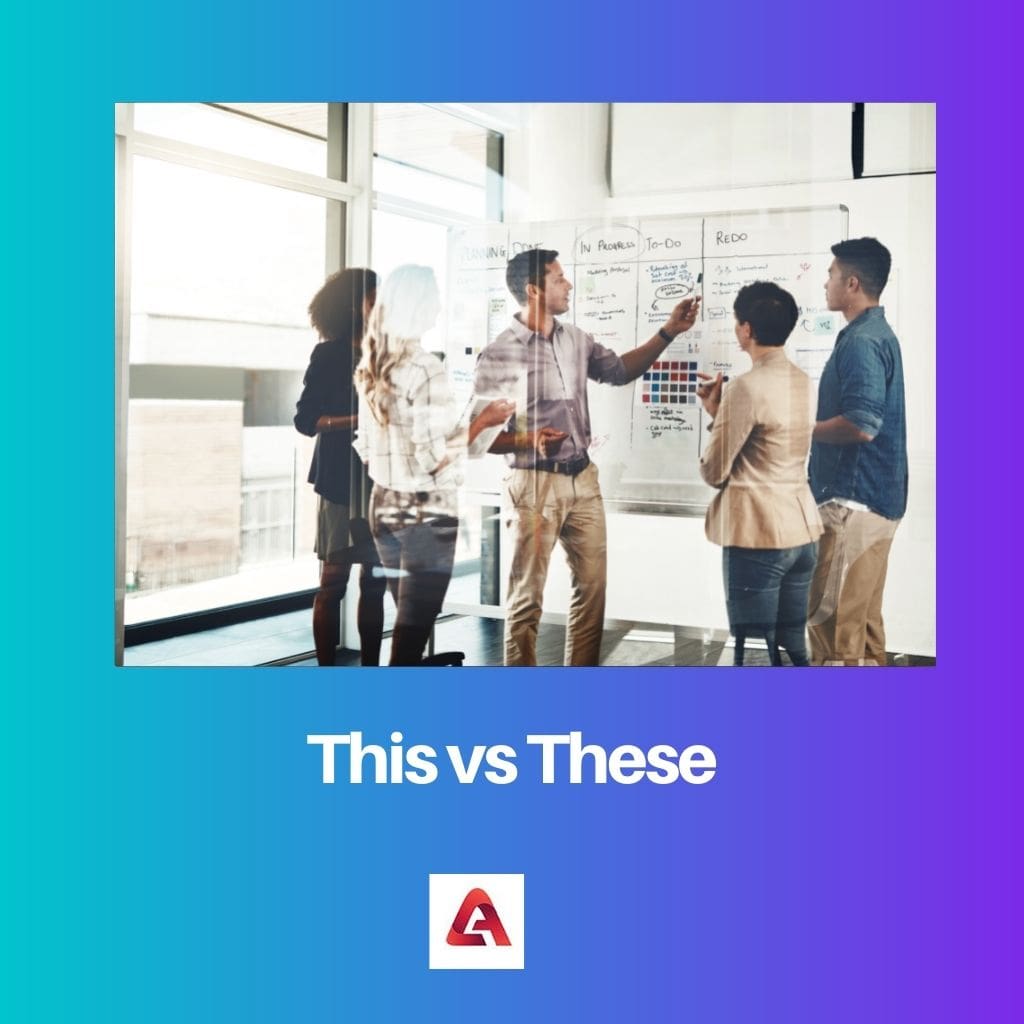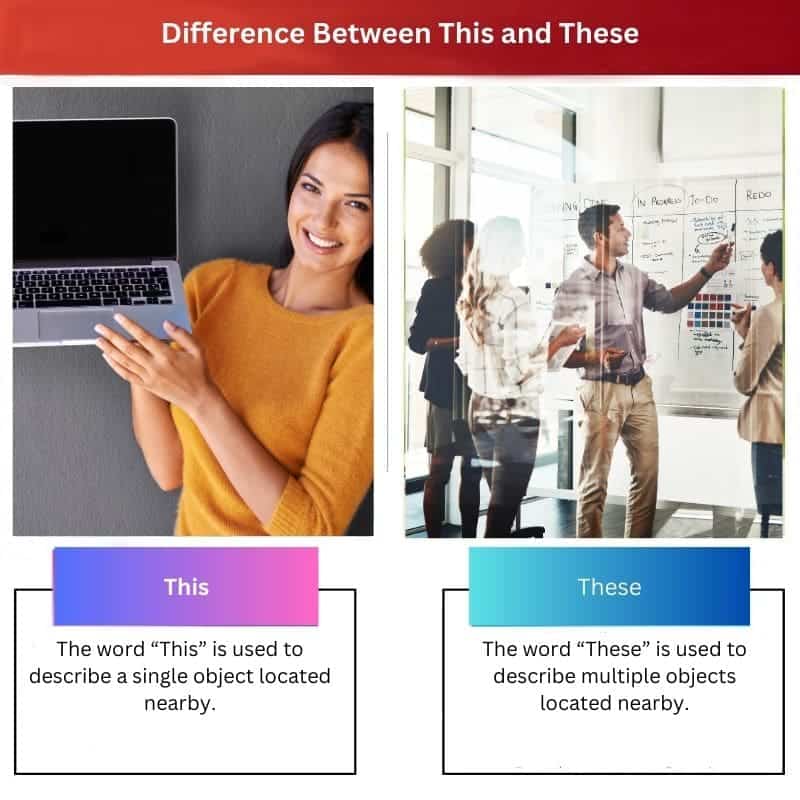“This” is used to refer to a singular noun or an unspecified item, whereas “these” is used to refer to multiple or specific items in close proximity. The choice between them depends on whether you’re discussing one thing or multiple things. “This” suggests a singular focus, while “these” implies a plural or more immediate focus within a context.
Key Takeaways
- “This” is used to refer to a single object that is near the speaker or the subject.
- “These” is used to refer to multiple objects that are near the speaker or the subject.
- The difference between “this” and “these” is in the number of objects referred to.
This is These
This is used to refer to a single object which is in a near place and time to the subject. It can also use to refer to uncountable objects. For example, this is my book. These are used to refer to multiple objects that are in a near place and time to the subject. For example, these are 20 books.

“This” and “These” are considered demonstrative pronouns used to point to any particular object. They replace the noun for ease of conversation.
Comparison Table
| Feature | This | These |
|---|---|---|
| Number | Singular | Plural |
| Reference | Refers to a single person, object, idea, or place | Refers to multiple people, objects, ideas, or places |
| Distance | Can be used to refer to something near or far from the speaker | Can be used to refer to something near the speaker |
| Examples | * This is my book. * I like this color. * This situation is challenging. | * These are my books. * I like these colors. * These situations are challenging. |
| Notes | * “This” can also be used as a determiner before a singular noun (e.g., this book). * “These” can also be used as a demonstrative pronoun on its own (e.g., I like these better). |
When to Use This?
Immediate Focus or Relevance
“This” is used to emphasize something that is more immediate or relevant in the current context. It directs attention to a specific item or concept within a conversation or written text.
Demonstrating or Pointing Out
Use “this” when demonstrating or pointing out something physically or metaphorically close to you or your audience. It’s employed to draw attention to something within arm’s reach or within the immediate surroundings.

When to Use These?
Multiple or Specific Items
“These” is utilized when referring to multiple items or specific entities within a group. It indicates that there are more than one of the mentioned items and distinguishes them from singular nouns or unspecified items.
Close Proximity or Grouping
Use “these” when the items being referred to are in close proximity to the speaker or the audience, either physically or conceptually. It suggests that the items are within reach or are being discussed as a collective group.
Identifying and Clarifying
“These” helps in identifying and clarifying particular objects or concepts from a larger set. It highlights the relevance of the mentioned items within a specific context, allowing for clear communication and understanding.

Main Differences Between This and These
- Number:
- “This” refers to a singular noun or an unspecified item.
- “These” refers to multiple items or specific entities within a group.
- Proximity:
- “This” emphasizes something immediate or relevant in the current context, within arm’s reach or in close proximity.
- “These” suggests items that are also close by, but in a plural or grouped form, implying they’re within reach or within the immediate surroundings.
- Clarity and Specificity:
- “This” directs focus to a singular object or concept, offering a more precise indication within a given context.
- “These” points to multiple items or entities, aiding in identifying and clarifying particular objects from a larger set or group.

- https://grammar.yourdictionary.com/parts-of-speech/pronouns/types-of-pronouns.html
- https://www.dictionary.com/browse/demonstrative-pronouns